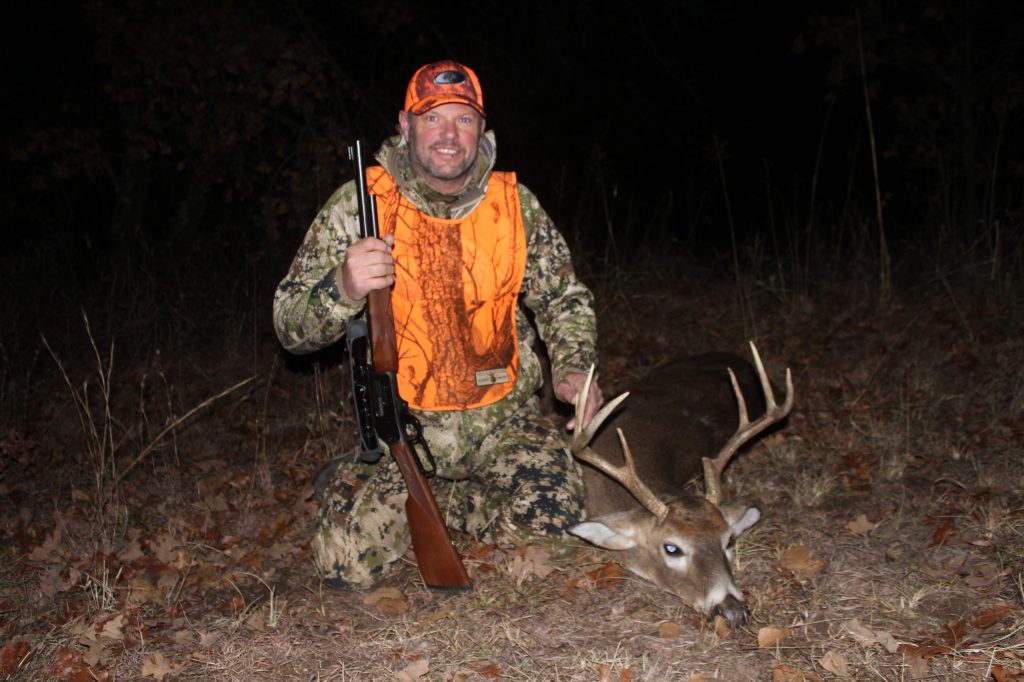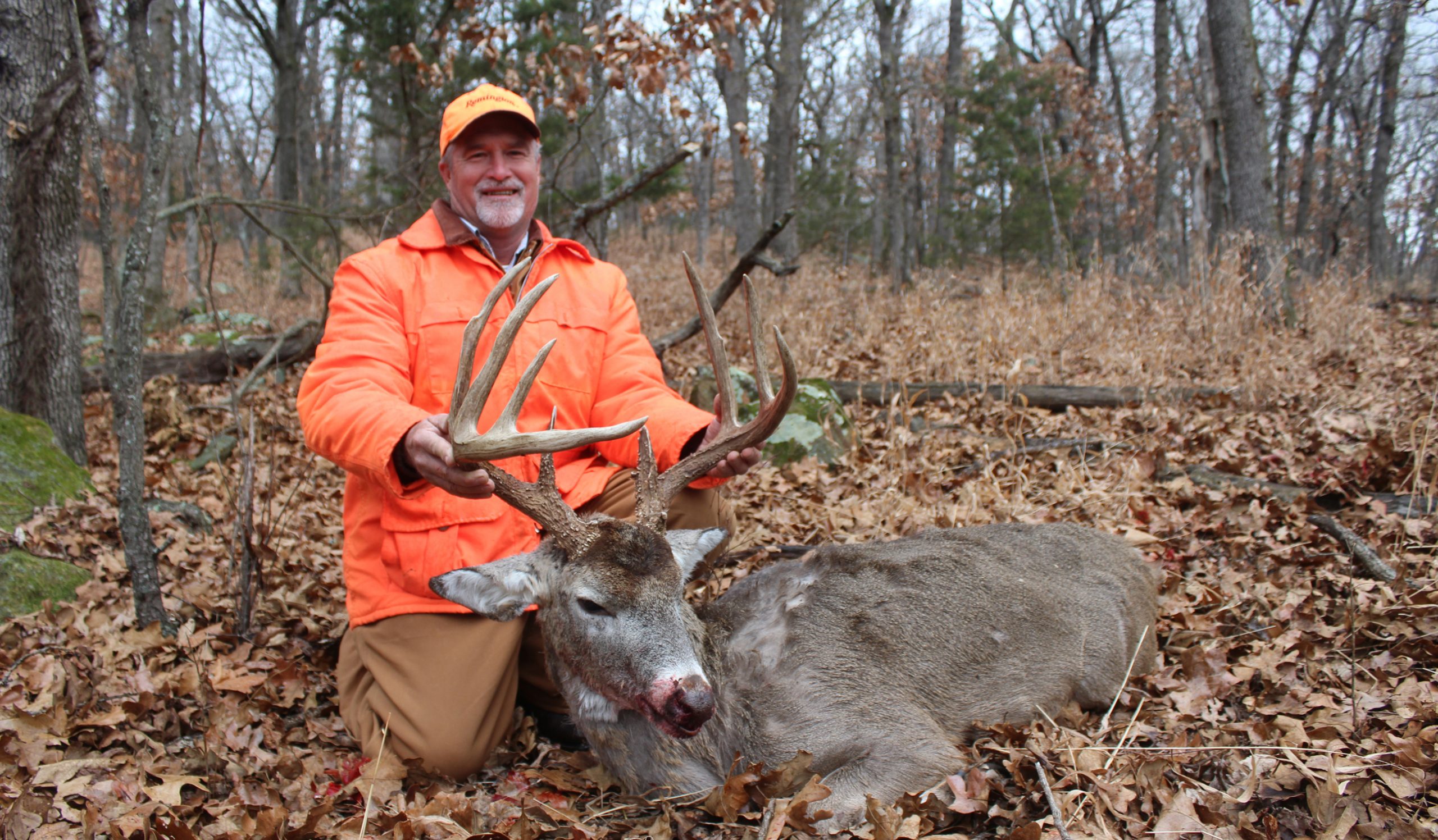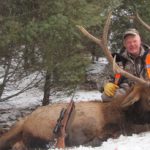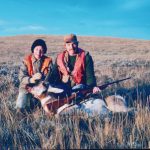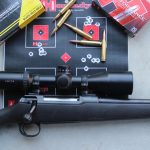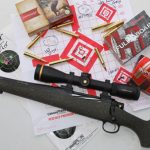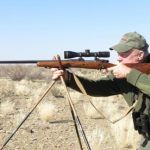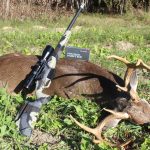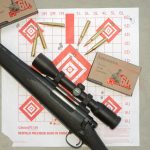Thoughts on what works, what’s popular, and what’s trending—based on a small sample of Kansas deer hunters.
Photo above: John Sonne used his .30-06 to take the best buck of the 2020 season on Boddington’s Kansas farm. With a 40-yard shot, you could say he was overgunned, but the buck was moving in thick cover, where it’s a good idea to have plenty of gun and bullet.
I recently wrote about the continuing (and seemingly endless) procession of new cartridges coming out these days. It isn’t anything like the ridiculous flood of new unbelted magnums we saw at the turn of the millennium, but there are still too many, and they come too fast, for any one writer to wring them all out. And, as gunwriters, do we really evaluate cartridges? Especially hunting cartridges?
The late Bob Penfold was a pioneer outfitter who essentially put South Pacific hunting on the map. In his younger days he did a lot of writing for Australian shooting and hunting magazines, and I’ll never forget what he said to me one day: “Mate, you American writers take a new rifle, cartridge, or bullet out and shoot one or two deer, and call it ‘field testing.’” In Australia, which has serious overpopulations of various feral animals, the situation is a lot different. “Over here,” he went on to say, “when we get a crack at something new, we go out and shoot fifty or sixty pigs or feral goats. Now, that’s field testing!”
We can do range testing, either exhaustive or cursory, and we can work up loads and shoot groups or ring steel to our heart’s content. However, with our short seasons and limited bag limits, it’s difficult and expensive to acquire significant field experience with any single cartridge, bullet, or load, whether new or old. I’ve never forgotten Penfold’s words, and I’ve kept them in mind whenever I find myself waxing a bit too eloquent on the near-magical properties of something new, or new to me.
That said, some extrapolation is valid. I first used the .264 Winchester Magnum in about 1965. I have not tried all of the new 6.5mm cartridges, and don’t need to in order to know how a good 140-grain 6.5mm bullet at about 3,000 feet per second performs on game, which, depending on who does the loading, is roughly the speed of the 6.5-.284 Norma, 6.5 PRC, 6.5 SST, the new 6.5 Weatherby RPM, and undoubtedly a bunch of other 6.5mm wildcats and proprietaries I don’t even know about. I can make the same comparison with the several 7mm and .30-caliber cartridges that (more or less) emulate the velocities of the 7mm Remington and .300 Winchester Magnums.
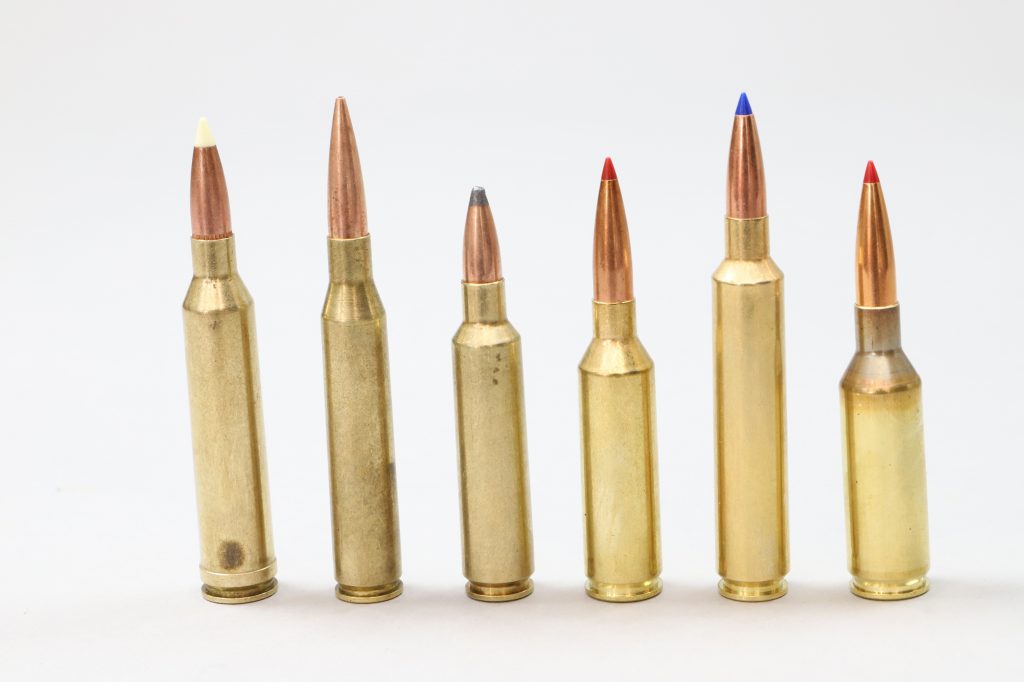
Benefits of modern case design are real. More efficient cases produce more energy per grain of powder burned because of a smoother burning curve, which is conducive to accuracy. However, I’m probably not going to spend time with a dozen 6.5mm PRC rifles to prove that the group average is better than the average groups I get from my .264. I’m not even sure a dozen rifles would prove it, because that .264 has an exceptional Obermayr barrel, and it shoots, despite archaic belted case and unpopular, near-obsolete cartridge.
This fall I hunted with a Springfield Armory Waypoint in 6.5mm PRC, the first time I’ve messed with that cartridge. The rifle is very accurate, and accounted for several whitetails. On game, the 6.5 PRC performed much like my old .264 (which is not damning with faint praise!). I have not yet squeezed the trigger on a .30 PRC, which should perform about like my .300 Winchester Magnum. Nor have I used a 30 Nosler, which should perform much like my .300 Weatherby Magnum. In time, perhaps I’ll try these or other newer cartridges. Maybe the rifles I try them in will be so spectacularly accurate that I’ll be an instant convert. Maybe not! I concede better case design, which, with barrels and ammo of similar quality, should produce better accuracy. But a blanket statement that new cartridges are “better” is a tough call to make.
These days, I have limited interest in proving the point. If I were a competitive shooter, even the slightest accuracy edge might be worth pursuing. As a hunter, for the handful of game animals we take each year, not a big deal. So many cartridges, and so few days afield! Some hunters are rapidly drawn to the latest cartridges. If they’ve made their choices based on serious study, without blindly accepting all the stuff that’s out there, they may see improved performance. Even if real improvement is illusory, confidence counts for much. However, a lot of hunters continue to rely on the old, reliable combinations. For sure, this isn’t wrong. In terms of the degree of precision required, hunting is neither benchrest nor 1,000-yard competition. If you already know what works for your hunting, why make a radical change?
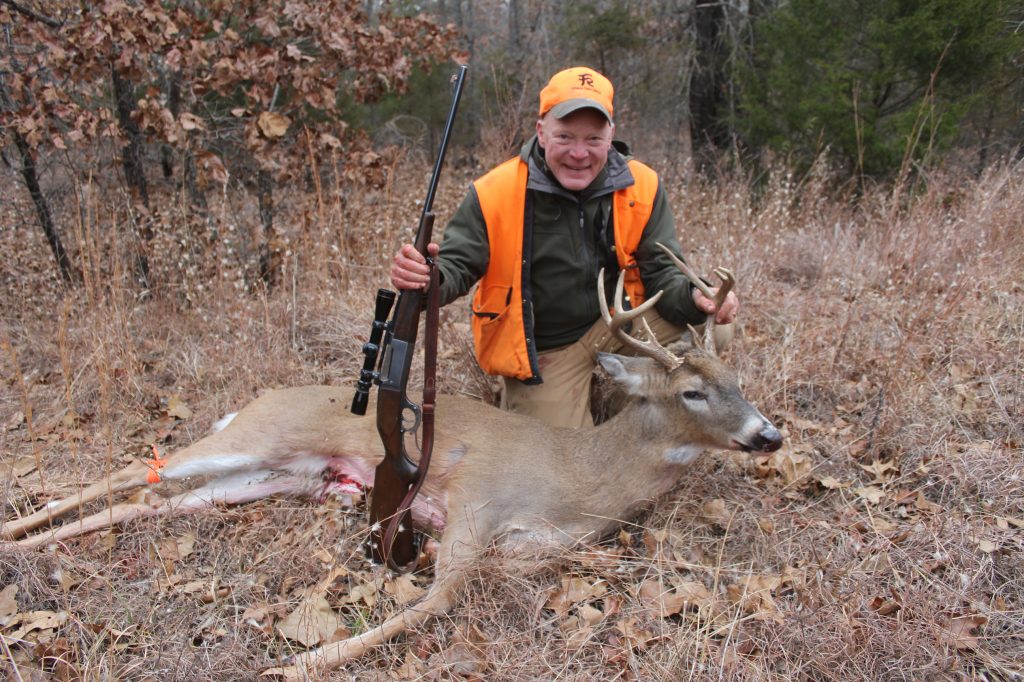
For about a decade, my Kansas neighbor and I have been hosting deer hunters during our short rifle season. They come from all over, ten or a dozen a year, and I look forward to seeing the selection of rifles and cartridges they bring. It’s a small sampling, not meaningful data, but I consider it a minor bellwether of trends. If you believe what we read, you’d think the 6.5mm Creedmoor is the only deer cartridge left in America, but it wasn’t until the 2019 season when young Brad McCarty brought the first Creedmoor we’ve seen. By then I’d joined the Creedmoor Club myself!
Other than advising hunters that our terrain and stands don’t offer long shots, we don’t put anything out there to influence rifle/cartridge decisions. However, literacy is required to negotiate the Kansas permit application, and I suppose my own preferences aren’t altogether unknown. We tend to think of the Creedmoor as appealing to younger shooters, so it was also surprising that, for the 2019 hunt, Lee Murray, over eighty, turned up with another 6.5mm Creedmoor. We were checking zero; Lee quickly added that he’d also brought a .30-06. I wasted no time in saying I was glad he’d also brought a “real gun.” Seriously, the Creedmoor is adequate for any shot (and any buck) we have, but we haven’t seen it much. And, only once ever, has anyone brought a cartridge below .25-caliber. In 2019 that was Erin Tremaine’s .240 Weatherby Magnum, the only time I have ever seen the .240 used in the field.
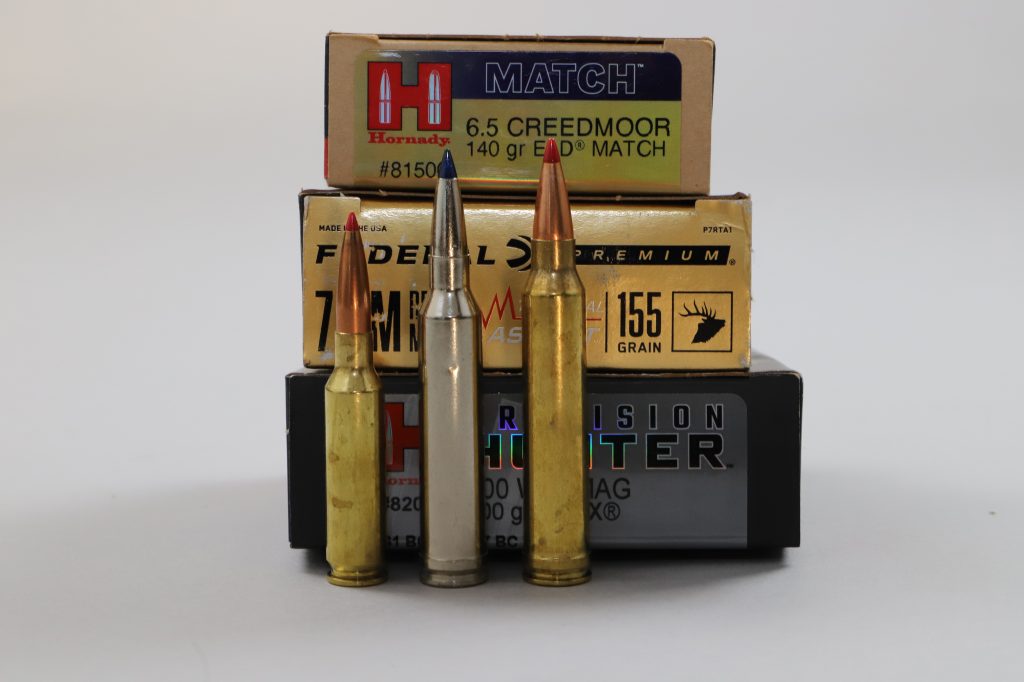
Among our two dozen stands, the longest possible shot is less than 300 yards. In 2019, we had a couple of deer taken at about 200 yards. In 2020, no shots exceeded 150 yards. At such distances, with good shot placement, almost anything will work, and most centerfire cartridges shoot plenty flat enough for our conditions. We do see a lot of faster cartridges. Even though this does not apply to the heavy timber in our southeastern corner, Kansas has the reputation for wide open country and longer shots. Thus, it doesn’t surprise me that every year somebody brings a fast .30, usually a .300 WSM or .300 Winchester Magnum. We’ve seen several .270 WSMs and the occasional 7mm Remington Magnum. In both 2019 and 2020, we had 6.5mm PRCs in the field. Considering we’ve seen only two 6.5mm Creedmoors, this is interesting.
The 2020 “cartridge crop” was, well, sort of normal, and, just perhaps, what you might expect to see in a lot deer camps throughout North America. Three of our hunters carried the .30-06; two had .270 Winchesters, and two more .308 Winchesters. Extra-fast cartridges included a 6.5mm PRC, a .300 WSM, and a .300 Winchester Magnum. Having been here before and knowing our conditions, Larry Tremaine shot his 2020 buck with a Marlin lever-action .45-70.
I’m sort of an extra, taking a leftover stand after I get everybody else out, and looking for a cull buck. As much as I would like to, I rarely risk my buck tag with an iron-sighted rifle. Fine for the distance, but in timber the light comes late and leaves early. So, until my buck tag is filled, I usually carry something with an optical sight. In 2020 I carried a scoped Savage 99 in .300 Savage. By the way, everything worked just fine; under our conditions, it’d difficult to make a bad choice!
One of the .308s was a Browning BLR lever-action. This is the first year we’ve seen more than one lever-action among our buck hunters, and that made three! We hear that the all-American lever-action is selling well and making a comeback, so maybe that is a small bellwether.
